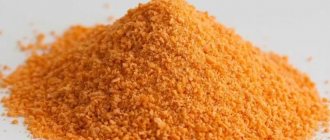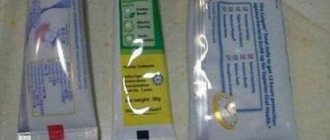Coffee is a drink with a rich history; an entire consumption culture has been built around it. To be able to enjoy the bright taste and special aroma, the product must be fresh. How long does ground coffee last? To control this issue, manufacturers write terms on the container. However, this is not enough: in order to preserve the quality of the drink for as long as possible, it must be literally protected.
First, let's deal with the deadlines
- Shelf life is the dates that manufacturers usually indicate on the container. During this period the product can be stored, it will not lose its tart taste or aroma;
- Expiration date is the date until which the product can be consumed without fear.
Shelf life of coffee beans
How long they can be stored without deteriorating or losing their properties depends on the type. The shelf life of coffee beans, if they have not been roasted, is on average 1 year. This is most often indicated by the manufacturer directly on the packaging. If green beans have been processed properly, this period of time can increase to two or even two and a half years.
If the grains were packaged incorrectly, then the shelf life may, on the contrary, be greatly reduced. When purchasing, it is advisable to be able to evaluate the appearance of the grains. They should have a rich greenish tint, which indicates freshness. If the grains are pale, it means that they have been lying around for a long time and could lose their properties. It is also important to pay attention to the integrity of the packaging.
Roasted coffee beans retain their quality much worse. If you store it incorrectly, it will lose its taste and aroma in just a week. Roasted grains have one feature - they easily absorb moisture and foreign odors, which seriously affects their own properties. Therefore, the choice of packaging for their storage must be approached with special care.
In a paper bag, the shelf life is about two weeks; foil packaging allows you to preserve the quality of coffee beans for up to three months. The best type are special tightly closed containers in which coffee can be easily stored for six months.
How long do unroasted beans last?
Grains without heat treatment can retain their valuable qualities for 1-3 years , and the use of sealed packaging can extend storage up to 5 years.
The appearance of the grains also speaks volumes. Freshly picked fruits are distinguished by a rich green velvety color and a pronounced longitudinal stripe.
When broken, their edges remain smooth, and they are characterized by the smell of fresh grass.
The pallor of the grains indicates their age.
And if in one package there are grains of different sizes and shades , then there is a mixing of harvests from different years.
This negatively affects the duration of preservation of the consumer qualities of the product.
Read in this article what kind of packaging and under what conditions it is better to store churchkhela.
It is also worth refusing to purchase grains that have shriveled edges , are hard, like stone, or, on the contrary, easily crumble, and have a musty smell.
Duration of storage of ground grains
Most lovers of the aromatic invigorating drink prefer to purchase it in whole grains. This is due to the fact that it is very difficult to store it in crushed form; it quickly loses its properties. If you purchased ground coffee in vacuum packaging, then after opening it can be stored for no more than two weeks. The essential oils contained in it evaporate very quickly. The shelf life of ground coffee, if it was ground yourself, does not exceed three days.
You might be wondering: Can coffee make you fat? Should you drink it while losing weight?
Coffee lovers advise:
- Purchase exclusively whole grains and grind them in a coffee grinder immediately before preparing the drink.
- If you still decide to buy ground coffee, then you should not buy it for future use; it is better to opt for a small amount.
- It is best to store it in a tightly sealed container, as far as possible from any strong-smelling products.
- Avoid exposure to moisture and direct sunlight.
How to properly store coffee
Each type of drink has different storage features. Among the common reasons that have a bad effect on the taste and smell of grains are:
The drink is purchased for daily consumption, but from time to time it is necessary to ensure a long shelf life. In both cases, the methods used are different.
In the short term, the following conditions for storing coffee are observed:
- Avoid the proximity of spices, as the grains quickly absorb foreign odors.
- Actively inspect packaging integrity and tightness.
- After purchase, it is better to pour the soluble product into a plastic container or jar with an airtight lid.
- Do not leave the container in direct sunlight.
- Each type and grade of product must be in a separate container.
- Do not dump fresh grains or ground analogues into a container with the remains of an old product.
- Do not use containers from one type of coffee for another.
To preserve the aromatic and taste properties of the drink for a long time, a freezer is used from time to time. In all this, it is important to comply with the following conditions:
- Pack the product tightly in opaque packaging.
- Do not remove the product from the cold during the shelf life. Avoid temperature changes.
- Before using the grain or powder, leave it at room temperature to warm up.
- Store the product for no longer than 2 months.
Storing greenish coffee beans
Greenish grains have a long shelf life: in the freezer for up to 3 years, without changing parameters. To do this, the raw materials must be painstakingly sorted out to eliminate any darkened, missing or incorrect grain configurations. Then dry for 12 hours at room temperature.
The following nuances are highlighted on how to store coffee beans:
- Divide the entire volume of the product into an equal number of parts and pack in tight bags or containers. With the vacuum packaging method, the shelf life is extended to 5 years.
- The container is filled so that a small amount of air remains.
- Wrap containers or bags tightly with cling film, foil or tape.
- Place the packages against the far wall of the freezer.
- To make coffee, the beans are taken out in small portions and defrosted at room temperature.
Greenish grains are contraindicated to be left in the refrigerator, as their characteristics are lost.
If the product is stored outside the freezer, then it is important to comply with the following conditions:
- ambient temperature - up to +25°C, humidity - 50%;
- capacity density;
- black place.
How to store roasted coffee beans
The shelf life of roasted grains in sealed packaging is up to 2 years, and in an open container the product does not lose its characteristics for up to 2 weeks. Due to differences in terms, gourmets do not recommend taking the product by weight.
It is better to store roasted grains in the freezer in packages of 100 grams according to the nuances as for greenish grains. The product is ground frozen.
For short-term savings, use a glass jar. In this case, the container is opened at least once every 2 days to release carbon dioxide, which is released for several days after roasting.
How to properly store ground coffee
The shelf life of ground coffee in sealed packaging is up to 1.6 years, in vacuum packaging it is extended to 3 years. If the powder is purchased in a store and the package is opened or the grains are ground at home, then it is advised to eat the product within 2 weeks.
Product storage features:
- After purchasing, it is better to pour the ground product into a glass jar that is tightly closed with a lid.
- Fill the container up to the neck, leaving no free space for air.
- The placement location is kept dry, as ground grains quickly absorb water and spoil.
- The product is stored in such a way that spices, seasonings, dried mushrooms or other products with strong odors are separated.
How to store instant coffee
The freeze-dried drink in a closed sealed package is stored for up to 5 years, and in an open form - up to 5 months.
Use a set of rules on how to properly store coffee:
- after purchase, the product is poured into a glass jar, covered first with a foil membrane, then with a lid - this preserves the taste and smell of the drink better than in other packages;
- if the freeze-dried powder is stored in a bag, then close the edge tightly, twisting the empty part and securing it with a clothespin;
- provide a black, dry place with humidity up to 75% and temperature up to +20°C.
Storage duration of instant drink
With this variety the situation is much simpler. The shelf life of instant coffee is usually 2 years. This is due to the fact that during production it is subjected to processing using high temperatures. At the same time, most of the essential oils contained in natural coffee simply disappear from the product.
They are being replaced by artificial analogues, which remain in the product longer. However, once opened, the packaging should be stored for no more than three weeks. During this time, the remaining natural substances disappear. You can extend this period by placing the coffee in a hermetically sealed container. In such packaging it can retain its properties for up to two months.
Jar
The preferred jar material is glass, clay, ceramics. The jar should have a tight-fitting lid (with a silicone layer) that will prevent the penetration of moisture and air. Prefer jars with opaque walls to protect the product from light.
Storing coffee in airtight containers has a number of disadvantages compared to special bags.
- Immediately after roasting, gases form in the beans, so it is best to wait a couple of days before placing the roasted product in a jar.
- After closing the lid, air and trapped moisture remain in the jar, which contribute to the occurrence of oxidation processes.
- Transparent glass allows light to pass through; it is better to wrap such a jar in thick material.
Experts strongly advise against using plastic containers (jars or containers) for three reasons. Firstly, the material has a specific odor that is quickly absorbed by the grains. Secondly, the containers do not have sufficient tightness (air and moisture will get inside). Thirdly, they have transparent walls that do not protect the product from light rays.
We recommend: How to store, dry, freeze and process viburnum at home?
Different types of storage containers
There are several types of packaging in which coffee is usually kept:
- Paper bags;
- Containers made of plastic or metal;
- Foil packaging with check valve;
- Glass or ceramic containers with a tight-fitting lid.
Each type has its pros and cons, which are worth considering in more detail.
Coffee is most often sold in bags made of paper in stores. But this is not the best packaging for the product. It is quite thin and does not protect well from environmental influences. Therefore, after purchasing, when you come home, it is advisable to pour the coffee into another, more suitable container for storage.
Metal and plastic containers are separated into a single group, since both are poorly suited for storing coffee in them for a long time. The reason for this is that these materials tend to give the product an unpleasant aftertaste, and can themselves become saturated with its odor, which is difficult to remove.
You might be wondering: Is it true that coffee removes calcium from the body?
Very often glass or ceramic jars are used for this purpose. It is advisable that the lid be equipped with a silicone seal to ensure the tightness of the package. If the container is transparent, then it is advisable to place it in a dark place to prevent exposure to sunlight. The disadvantage of such containers is that there is no possibility of removing carbon dioxide from it.
Therefore, grains that have been roasted independently can be transferred to a jar only after a day. During this time, gases and excess moisture will come out of them.
The best storage option is foil bags equipped with a special clasp and valve. They significantly increase the shelf life of coffee. The opaque material prevents sunlight from reaching the product, and the non-return valve allows excess gas to escape freely from the packaging.
Storing roasted coffee beans
Packaging of beans after roasting does not occur immediately, but after 3-5 days, in some cases even after 2 weeks. The granules, pre-treated with heat, dry out , simultaneously freeing themselves from carbon dioxide and essential oils.
Heat treatment triggers processes that ultimately lead to the formation of a caffeinated substance .
It is thanks to this component that coffee is distinguished by its unique aroma.
- Packaging the product in paper containers , as well as foil or special film, allows you to preserve the consumer suitability of coffee for 1 year.
- If sealed paper bags do not have gas vents, the storage period is reduced to six months.
- Containers with a polymer coating inside facilitate storage for 9 months.
- Using tightly sealed opaque glass containers increases this period to one and a half years.
Find out in the following article how long it is necessary to use mayonnaise.
Opening the packaging material triggers oxidation as a result of contact with oxygen, which negatively affects the consumer characteristics of the product.
The shelf life of an open can of grains expires after 14 days, and the duration of storage in ground form should not exceed 3 days.
If you are dealing with a bag equipped with a valve , then before closing it you should get rid of any remaining air and seal it with a clamp.
In a simple container with a simple twist, the shelf life is short (10-14 days). The use of special containers that block the flow of air increases the safety of goods up to six months.
vacuum packaging is equipped with a check valve that removes carbon dioxide and prevents oxygen from entering.
Such packaging also prevents contact with bacteria and foreign odors.
If you plan to store coffee in the kitchen, read here about temperature standards in the apartment.
Oxidation processes also slow down, and therefore the duration of preservation of the product in a vacuum is quite high - up to 18 months .
Can I drink coffee if the expiration date has expired?
Like any other product, it is better not to use it after the storage time has expired. Spoiled coffee can be identified by several signs:
- The appearance of rancid taste;
- Lack of aroma of the drink;
- The appearance of mold (this happens if moisture gets into the packaging);
- Formation of foreign odors.
What happens if you drink expired coffee? Even one cup of this drink can cause food poisoning. The main danger comes from the fats present in the grains, which seriously deteriorate over time. Instant coffee is unlikely to lead to dire consequences, since it does not contain such substances. But one way or another, you won’t get a tasty drink from a product that has expired.
If you hate to throw away expired coffee beans, you can use them to make crafts. They are often used to create topiaries, panels and decorate photo frames. Using imagination and creativity, you can make an interesting decoration for your interior.
Expired coffee beans: consequences of consumption
In general, there is no danger to the health of a person who decides to drink expired coffee. Cases of poisoning after such a drink have never been recorded.
But coffee that is overdue for a year gradually loses its catchy taste, pleasant smell and, perhaps most importantly, the invigorating characteristics of the coffee beans.
Conclusion: spoiled coffee will not cause harm to a person, and you should not expect any beneficial effects.
How to properly store coffee beans at home: useful tips.
For many years, coffee has been considered one of the most popular drinks around the world. But in order to prepare a perfect cup of coffee with a unique taste and invigorating aroma, it is very important to use only high-quality natural beans. That’s why it’s important for drink lovers to know how to properly store coffee beans at home in order to prevent loss of taste and aromatic properties. Often, non-compliance with the temperature and humidity levels leads to the fact that coffee simply loses all its taste, which forces you to throw the expensive product in the trash. This article will tell you how to store coffee beans after opening the package so that the drink purchased from them will be enjoyable for a long time.
How long can instant coffee be stored?
The shelf life of instant is longer compared to grain and ground. If we compare the shelf life of solid and instant, the second greatly benefits in this regard: it is produced using the latest technologies, flavors and anti-caking agents are added to it, which help to increase the shelf life of the drink.
Well-known coffee producing companies print on bags and cans its average shelf life of 3 years. After opening the container, the instant drink does not lose all its best qualities immediately, unlike ground drink, but gradually, after several months.
There are some recommendations, following which you can increase the shelf life of instant coffee and preserve its taste:
- At home, the powder can be kept in an opaque jar, tightly covered with a lid.
- It is necessary to place this container in a dry and cool place.
- Soluble should not be placed in the refrigerator, since loose powder perfectly absorbs excess odors and moisture, which is present in excess in the refrigerator.
- If you need to refresh or enhance the aroma of instant coffee, you can put one cinnamon stick in a container with powder.
If the brewed instant drink has an incomprehensible dark color and bitter taste, it means that it is spoiled and is highly not recommended to be consumed.
What can happen if stored incorrectly
If stored improperly, the characteristics for which everyone loves the invigorating drink inevitably deteriorate:
- in air, the grains oxidize and change or lose their taste;
- the aroma disappears because the aroma compounds are unstable;
- the foam becomes thin and unstable as the grain structure becomes denser;
- coffee absorbs moisture - the taste deteriorates and mold appears;
- with simultaneous dampening and oxidation, the grains decompose;
- Coffee absorbs surrounding odors.
However, what is more important is that if storage conditions are violated, the product can become hazardous to health. If it becomes damp and covered with mold, you cannot brew the drink - you can get poisoned. If the coffee beans smell like rancid fat, this indicates spoiled oils, which are harmful to the liver.
- Don't miss: The benefits and harms of coffee beans
Shelf life of coffee in vacuum packaging
Vacuum packaging of roasted coffee beans has become widespread. It is a package, most often made of foil. The air from the bag is displaced and replaced with an inert gas. It slows down or completely stops the oxidation process. Vacuum packing of beans and ground coffee varies. In the latter case, the air is simply pumped out of the bag without being replaced by anything.
The packaging of coffee beans is equipped with a reverse-action gas vent valve to remove carbon dioxide that comes out of freshly roasted beans.
- The shelf life of beans in vacuum bags is up to 18 months.
- If the seal of the package is broken or the package is opened, the shelf life of the grains is 2 weeks. Before the end of this period, coffee must be consumed.
Fried grains, even with all sorts of tricks, quickly lose some of their properties, so they are subject to short-term storage.
The health risks of expired coffee
Before purchasing, you need to pay attention to the shelf life of coffee. What happens if you drink a drink made from expired raw materials? Spoiled grains do not pose a direct threat to health and life. Fruits of the coffee tree that have been stored incorrectly or for a long time will lose their aroma, and the taste of such a drink leaves much to be desired. The grain product retains its flavor and aroma properties longer, while its instant version loses its smell and taste much faster.
The longer the raw material has to be stored, the less caffeine it contains, the substance that is responsible for the invigorating properties of the drink.
To fully enjoy drinking coffee beans, you need to know its expiration date, store it correctly, and also use proven recipes for preparing the drink!
Types of storage – long-term and short-term
Short-term and long-term storage of a product require completely different conditions. The need to preserve taste and aroma for a long period of time appears only when purchased for future use. For example, if you were able to purchase several packages at a promotion or you placed an order abroad. If there is no special need, you should not buy for future use; it is better to buy it for 1-2 weeks. In this case, you can enjoy a fresh, aromatic drink every time. Please note that almost immediately after roasting, coffee begins to fade, and the ground powder quickly becomes unusable.
- Don't miss: How to Roast Coffee Beans at Home









